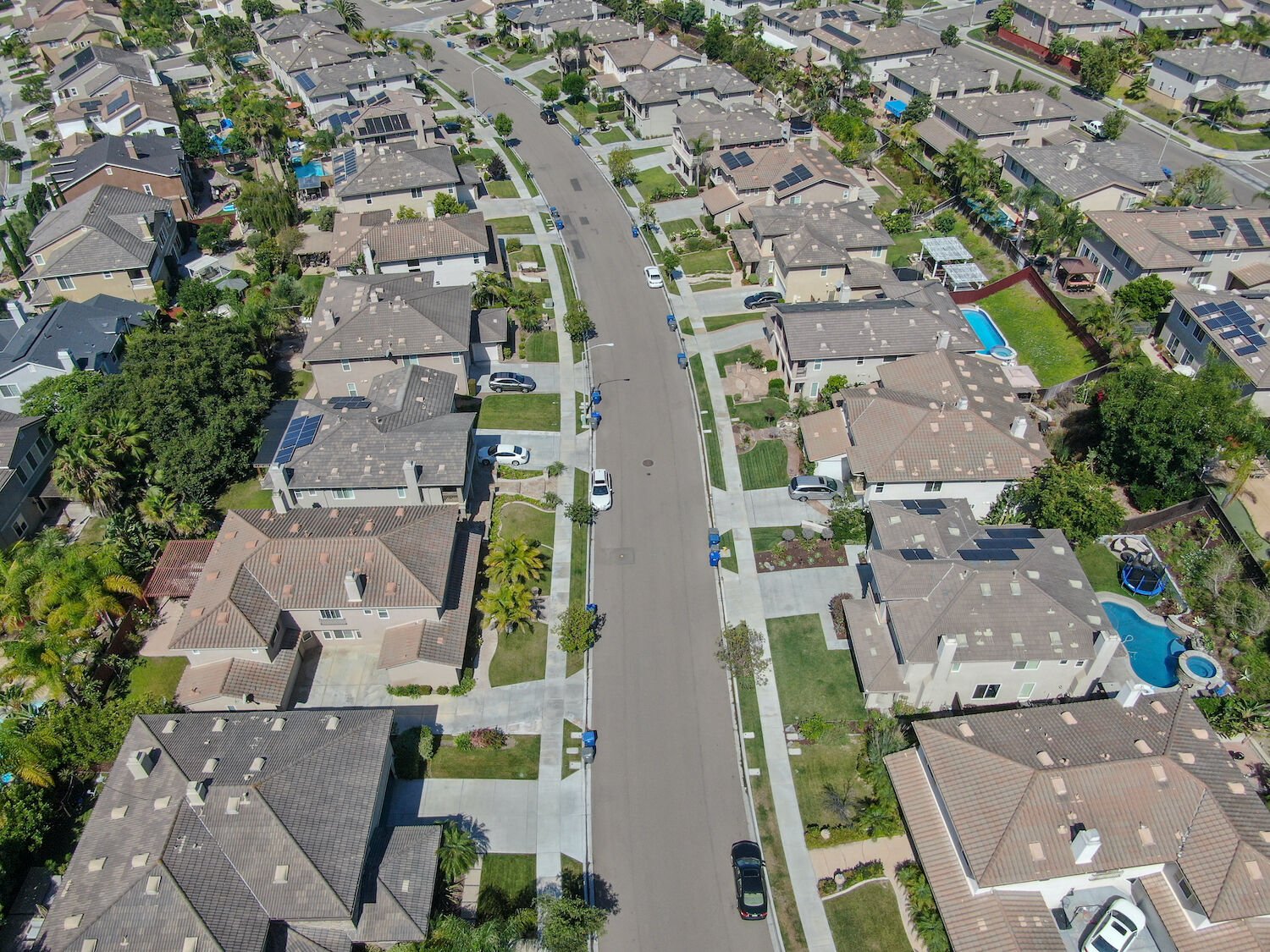
The median home price in San Diego reached a high of $873,250 in June of 2021
Shutterstock.com
Nobody was calling the San Diego real estate market affordable back in 2019, when the median price for single-family homes peaked at $673,000. But we were practically wistful after summer 2020 pushed that number to $741,180. And even that looks adorable in retrospect, as a frenzy of activity in 2021 vaulted the median home price to $873,250 by June. This data, compiled by online brokerage and listing aggregator Redfin, reveals just how bleak the landscape is for aspiring home buyers.
It’s difficult to uncouple the alarming rise in home values from the pandemic. Conventional wisdom says that millions of white-collar Americans shifted to remote work all at once, prompting a wholesale change in housing needs that placed a premium on extra square footage.
According to Taylor Marr, a deputy chief economist at Redfin, urban and suburban prices per square foot typically rise at similar rates, but that changed in 2020. In many suburban areas, the median price per square foot pushed over $400—and even $500—meaning buyers were forced to redefine what they consider to be a million-dollar home. But the desire for home offices is only part of the story.
Over the past two years, historically low interest rates, and millennials coming of age as home buyers, increased demand while supply remained on par with previous years. And unlike previous years, new listings in 2019 would remain on the market for more than three weeks. In 2021, the median selling time dropped to nine days.
Any given weekend, home buyers targeting certain neighborhoods—Mount Helix, Poway, Carmel Valley, and San Carlos—would find only a handful of options available. As Chris Anderson, president of the San Diego Association of Realtors, explains, this made the notion of a dream home unattainable, as frustrated buyers grew increasingly aggressive with their offers. “If there’s 30 offers and yours doesn’t get taken,” she says, “the other 29 are going to be against you on the next one, too.”
By now we’ve all heard the shocking tales. Bidding wars pushing values eight percent above asking price. High-paid tech workers from San Francisco stepping in with an all-cash offer to snare a listing they’ve never seen in person.
Anderson confirms the rumor that people have been buying homes “sight unseen,” noting that some out-of-town buyers have been ready to board a plane to get the jump on a listing, but others have been satisfied with video walk-throughs. She’s been a Realtor since 1989, but says “the game has changed.” She’s even gone to a home with a prospective buyer on a FaceTime call so she can walk them through the property.
Out-of-Town Buyers
So how much did Bay Area buyers actually fuel this price spike? To figure it out, Marr points to Redfin home buyer searches, which have proven a reliable predictor of census movements. Recent data shows that 14 percent of searches for San Diego properties came from the Bay Area. This figure may include a set of buyers Anderson has encountered: survivors of recent Northern California wildfires, who received insurance checks after their properties were destroyed. However, the data also shows that, by volume, more than 50 percent of searches came from Los Angeles.
Regardless of their origin, Marr’s research reveals that an out-of-town buyer showed up with a budget 7.6 percent higher than what locals could spend. While metropolitan real estate markets across the country have boomed during the pandemic, he suspects that migrating home buyers fueled a phenomenon relatively unique to San Diego in 2021: Urban homes and condo prices catching up to the gains seen in the suburbs.
The outlook may not be encouraging to San Diegans seeking to own their homes. If there’s any good news to be found, it’s that prices have eased slightly, and with interest rates rising, experts expect the market to slow down.
PARTNER CONTENT
For first-time buyers, the last glimmer of hope may be condos. “You can pretty much always find a condo,” says Marr. “Just do it when you’re not going to compete with other buyers as much.”


















